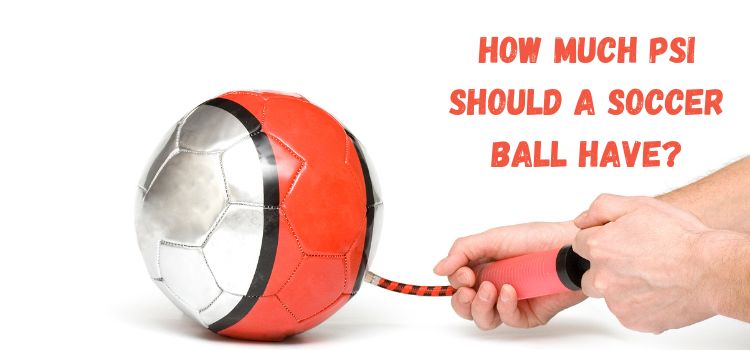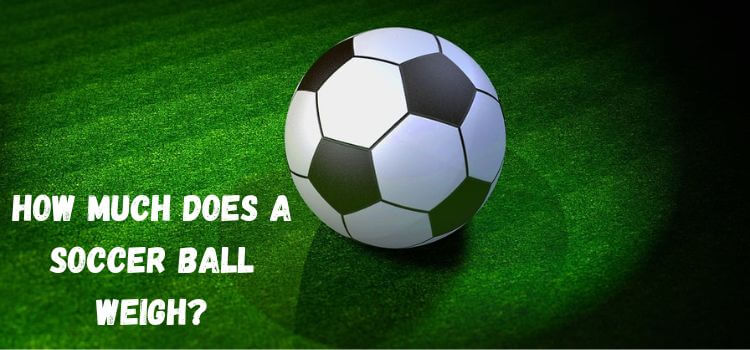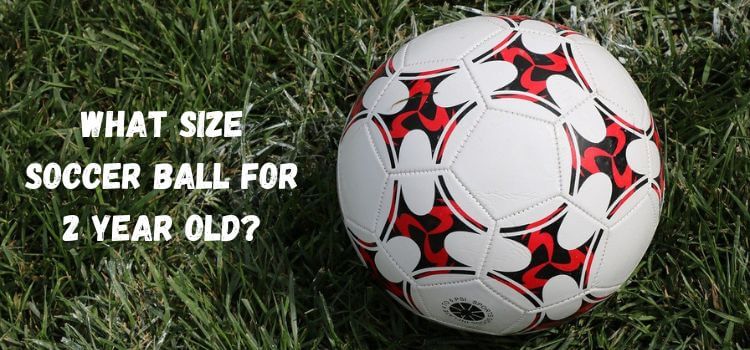As an Amazon Associate, I earn from qualifying purchases
Would you like to know what the best PSI (Pounds per Square Inch) should be on your soccer ball? Whether you’re gearing up for a competitive match or a friendly kickabout or want to enhance your gameplay, understanding the proper air pressure is crucial.
In this comprehensive guide, we’ll delve into the intricacies of “How Much PSI Should a Soccer Ball Have?” – providing you with valuable insights and expert recommendations to ensure your soccer ball is perfectly inflated for optimal performance on the field. Let’s kick off this exploration into the ideal air pressure that can make a significant difference in your game!

Introduction
Soccer enthusiasts often debate the ideal pressure for their soccer balls, wondering, “How much PSI should a soccer ball have?” Optimal performance on the field lies in the answer to this seemingly simple question.
Importance of Proper Soccer Ball Inflation
Proper soccer ball inflation is a crucial aspect of the game that directly influences performance. From accurate passes to powerful shots, the pressure within the ball plays a significant role in shaping the dynamics of play.
Impact of PSI on Performance
Understanding the relationship between pounds per square inch (PSI) and performance is essential for players aiming to elevate their game. The proper PSI contributes to better control, accuracy, and overall player safety.
Understanding PSI
Definition and Significance
Using PSI, or pounds per square inch, you can determine how much air is inside a soccer ball. It is a vital metric as it determines the ball’s responsiveness and behaviour during play.
Standard PSI for Soccer Balls
While the recommended PSI can vary slightly based on factors like ball size and material, a standard range of 8.5 to 15 PSI is commonly accepted in the soccer community.
Factors Influencing PSI
Weather Conditions
Weather can impact the inflation of soccer balls. It is essential to check and adjust PSI regularly when temperatures are extreme, whether they are hot or cold.
Playing Surface
The type of playing surface also affects PSI. For instance, a ball used on a grass field may require different pressure than one used on turf.
Ball Material
The material of the soccer ball influences its response to pressure. Different materials may expand or contract at varying rates, affecting the overall PSI.
Effects of Underinflation
Reduced Accuracy and Control
Underinflated soccer balls lead to decreased accuracy and control during play, making it challenging for players to execute precise passes and shots.
Increased Risk of Injuries
Furthermore, underinflated balls pose an increased risk of injuries, as players may struggle to predict the ball’s trajectory, leading to unexpected collisions.
Effects of Overinflation
Decreased Ball Control
On the flip side, overinflated soccer balls result in decreased ball control. Players may find it challenging to keep the ball on the ground and execute finesse moves.
Impact on Player Performance
Overinflated balls can adversely affect player performance as the ball becomes less predictable, and the chances of mishandling increase.
Optimal PSI for Different Situations
Ideal PSI for Recreational Play
For casual play, a moderate PSI within the range of 9 to 12 is generally suitable, providing a balance between responsiveness and control.
Recommended PSI for Professional Matches
Professional matches often adhere to a more specific range, with most soccer organizations recommending a PSI between 8.5 and 15 for match balls.
A soccer ball typically should be inflated to a pressure of around 8.5 to 15.6 pounds per square inch (psi) or about 0.6 to 1.1 kilograms per square centimetre (kg/cm²). However, the specific recommended pressure can vary slightly depending on the size and construction of the ball, so it’s a good idea to check the manufacturer’s recommendations if available.
Importance of Regular Checking
How Often Should Players Check PSI?
Regular checks are crucial to maintaining optimal PSI. Players should make it a habit to check their soccer ball’s pressure before each game or practice session.
Simple Methods for Checking PSI at Home
Checking PSI at home is simple with the use of a pressure gauge. Players can easily acquire one and follow straightforward procedures to ensure their ball is inflated correctly.
Tips for Proper Inflation
Using a Pressure Gauge
Investing in a reliable pressure gauge is essential for accurate inflation. This tool allows players to measure PSI precisely and make necessary adjustments.
Adjusting PSI Based on Playing Conditions
Adapting to different playing conditions is crucial. Players should be prepared to adjust the ball’s PSI based on weather, playing surface, and personal preferences.
Common Myths and Misconceptions
Myth: Higher PSI Equals Better Performance
Contrary to popular belief, higher PSI does not necessarily translate to better performance. Each player should find the optimal PSI that aligns with their playing style and preferences.
Addressing Misconceptions About PSI
For soccer players to gain a better understanding of PSI, it is essential to dispel common misconceptions.
Equipment for Optimal Inflation
Portable Air Pumps
Having a portable air pump ensures that players can maintain the correct PSI on the go. It’s a valuable tool for pre-game preparations.
Importance of Needle Maintenance
Regularly checking and maintaining the inflation needle is often overlooked but is crucial for accurate pressure adjustments.
Soccer Ball Brands and Recommended PSI
Variations in Recommended PSI
Different soccer ball brands may provide specific recommendations for optimal PSI, considering the unique features of their balls.
Impact on Brand Preferences
Understanding the relationship between PSI and brand preferences can guide players in choosing the right soccer ball for their needs.
Expert Recommendations
Insights from Professional Players
PSI is often a matter of personal preference for professional players. Learning from their insights can offer valuable guidance for aspiring soccer enthusiasts.
Advice from Soccer Coaches
Soccer coaches play a pivotal role in guiding players on optimal PSI settings, tailoring advice based on individual skill levels and positions.
Environmental Considerations
Impact of Temperature Changes on PSI
Temperature fluctuations can significantly impact soccer ball inflation. Players should be aware of environmental considerations and make adjustments accordingly.
Storing Soccer Balls in Varying Climates
Proper storage becomes crucial in maintaining consistent PSI, especially when soccer balls are exposed to varying climates.
Frequently Asked Questions (FASQs)
Ignoring proper ball inflation can lead to decreased performance, increased injury risks, and overall frustration during play.
Yes, a regular air pump is suitable for inflating soccer balls. However, using a pressure gauge is recommended for precision.
While there’s a standard range, individual preferences and playing conditions may require slight adjustments to find the perfect PSI.
Professional players and teams have dedicated equipment managers who meticulously monitor and adjust ball pressure before each game.
Overinflating a soccer ball can lead to damage, affecting its durability and performance over time. It’s essential to adhere to recommended PSI guidelines.
Conclusion
In conclusion, the question of “How much PSI should a soccer ball have?” underscores the importance of ball maintenance in a beautiful game. By understanding the nuances of proper inflation, players can enhance their performance and prolong the lifespan of their soccer balls.
Read Our More Articles
- How Firm Should a Soccer Ball Be? Exploring the Ideal Inflation
- Does a Soccer Ball Not Moving Have Energy? Find Out Here!
- How to Inflate a Soccer Ball without a Pump – A Quick Solutions
As an Amazon Associate, I earn from qualifying purchases


